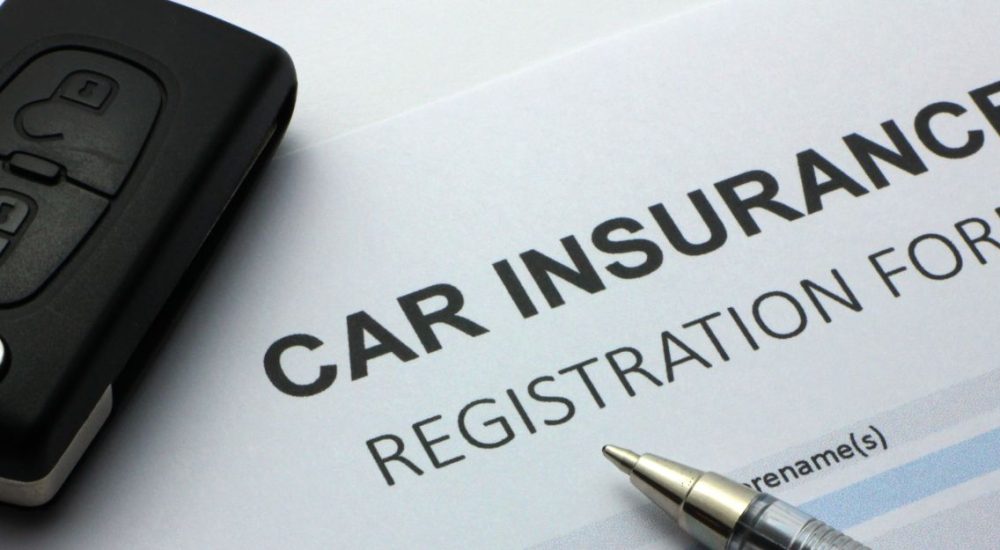|
|
Last Modified on May 21, 2025
If you’re going to drive someone else’s car in Texas, or let someone drive yours, you really need to know, “Does Insurance Follow the Car or the Driver in Texas?” Someone in Texas is involved in a car crash just under once every minute, on average. For this reason, it is vital to have your vehicle insured and know how the Texas driving laws affect you.
There can be confusion on whether a different driver is still covered under your insurance policy if they are involved in a crash while driving your vehicle. Understanding Texas insurance laws is important for ensuring that your vehicle, its drivers, and its passengers are all properly covered and protected.
Obtaining Texas Insurance and Covering Your Vehicle
In most states, including Texas, insurance coverage follows the car, not the driver. When applying for coverage, you will be asked to list any individuals who will be expected to drive the vehicle on a regular basis, such as a spouse, roommate, or child holding a driver’s license. However, any individual with permission to use your car will be covered by your insurance policy regardless of whether they are named.
In Texas, you can obtain the following types of coverage for your vehicle:
- Liability. This coverage covers damages in collisions that are deemed to be your fault or the fault of the person driving your vehicle. You will choose limit amounts for both bodily injury and property damage coverage. Texas law requires at least $30,000 for injuries, $25,000 for property damage, and a total of $60,000 per accident.
- Collision. This reimburses the costs to repair or replace your vehicle after an accident.
- Comprehensive. This coverage protects against damage that does not result from an accident, such as theft, vandalism, natural disasters, or other causes that are not the result of a collision.
- Personal injury protection. This pays for medical bills for you and your passengers as well as lost wages and other losses incurred by the accident.
- Uninsured/Underinsured motorist. This coverage is meant to make up the difference for any damages resulting from an accident that are not covered by the other driver’s insurance. If their policy only covers the minimum $30,000 for personal injuries but your medical bills exceed this amount, for example, then this coverage would kick in to fill in the gap.
- Additional coverage. Your insurance company may offer additional coverage options, such as glass, towing, additional missed labor coverage, or rental car reimbursement. While not required, many of these additional coverage options are a good idea to have.
Minimum Auto Insurance Requirements in Texas
| Coverage Type |
Minimum Required |
Recommended Amount |
What It Covers |
| Bodily Injury (per person) |
$30,000 |
$50,000-$100,000 |
Medical expenses for injuries you cause to others |
| Bodily Injury (per accident) |
$60,000 |
$100,000-$300,000 |
Total injury coverage for all people hurt in one accident |
| Property Damage |
$25,000 |
$50,000-$100,000 |
Damage to other vehicles and property you caused |
| Personal Injury Protection |
Not Required |
$2,500-$10,000 |
Your medical expenses and lost wages |
| Uninsured/Underinsured Motorist |
Not Required |
$30,000/$60,000 |
Protection when other drivers lack adequate insurance |
💡 Important Note: Texas requires these minimums regardless of who’s driving your car. Your policy covers anyone driving with your permission.
What to Do When Someone Else Driving Your Car Gets in an Accident
If your vehicle is involved in an auto accident in Texas, the following steps are necessary and important regardless of who was driving:
- Assess your situation. First, make sure everyone in the vehicle is okay, checking yourself and all occupants for injuries. If possible, move the vehicle to a safe location. Then, notify authorities of the accident by calling 911. Seek medical attention, if necessary.
- Document everything. Next, if you are physically able, take photos of the scene of the accident, including both vehicles from all angles, street signs and other location identifiers, or any marks in the road from tires. Take note of the names of all parties involved from both vehicles, gather witness accounts, and take note of license and insurance information.
- Contact a lawyer. After leaving the scene of the accident, the remaining steps will involve dealing with insurance companies and potential legal action against the at-fault party. It is strongly recommended that you speak with an experienced car accident attorney, as they can walk you through the process, help you gather proper evidence and documents, and negotiate on your behalf for a full and proper settlement amount.
In short, if someone else was driving your car at the time of an accident, you will follow the same steps as if it were you driving.
Who’s Covered When Someone Else Drives Your Car?
| Scenario |
Primary Coverage |
Your Risk Level |
Rate Impact |
| 🏠 Spouse/Partner (listed on policy) |
Your Insurance |
Low |
No increase expected |
| 👨👩👧👦 Adult child (household member) |
Your Insurance* |
Medium |
May increase if not listed |
| 👥 Friend/Relative (with permission) |
Your Insurance |
Low-Medium |
Minimal increase |
| 🚫 Excluded driver (explicitly excluded) |
Coverage Denied |
Very High |
Significant increase |
| 🚨 No permission (theft) |
Coverage Denied |
None |
No impact |
*Note: Household members with regular access to your vehicle should be listed on your policy. Some insurers may deny claims if frequent drivers aren’t properly listed.
Understanding the Nuance: When Insurance Follows the Driver
We’ve just gone over how insurance follows the car in Texas, not the driver. While that’s generally true, there are important exceptions you should know about.
Some coverages actually travel with you as a driver, regardless of whose car you’re in. Your Personal Injury Protection (PIP) is a good example – it covers your medical expenses even when you’re driving your friend’s pickup truck or your sister’s sedan.
Your liability insurance can also kick in as backup coverage when you’re driving someone else’s vehicle. This matters because if you cause a serious accident in a borrowed car, the owner’s policy might not be enough to cover all the damages. In that case, your own policy can help cover the remaining costs.
Don’t assume you’re fully covered or completely unprotected when driving someone else’s car. The actual answer lies somewhere in between and depends on both policies.
Your Policy When Driving Someone Else’s Car
When you borrow a car with the owner’s permission, several parts of your auto policy typically come with you:
- Your liability coverage will usually protect you if you cause an accident.
- Your medical payments coverage should still pay for your injuries.
- And your uninsured/underinsured motorist protection generally extends to you in borrowed vehicles.
But here’s where many people get confused: your collision and comprehensive coverage almost never transfer to the borrowed vehicle. This means if you wreck your friend’s car, your insurance probably won’t pay to fix it.
The rules change slightly depending on whose car you’re borrowing:
- If it’s a friend’s car you’re using for the afternoon, your liability coverage extends without much hassle.
- With rental cars, you might need extra coverage since your personal policy may have limitations.
- If you’re regularly driving a car owned by someone in your household, you should be listed on their policy to avoid potential problems.
Many drivers learn this the hard way after an accident. The National Association of Insurance Commissioners has seen countless cases where people assumed they were covered while regularly driving a household member’s car, only to face claim denials.
When Coverage Might Be Limited or Denied
Not every situation is covered when you’re driving someone else’s car. Here are some common scenarios where you might find yourself without protection:
Using a borrowed car for business purposes is a big red flag for insurance companies. If you’re delivering pizzas or picking up rideshare passengers in your roommate’s car, most personal auto policies won’t cover accidents.
Driving without permission is another obvious problem. If you take someone’s car without asking, insurance won’t cover you – and you might face other legal troubles too.
If the car owner’s insurance has lapsed, that creates another complication. Your policy might become the only source of coverage, but it might not cover damage to the car you’re driving.
Many policies also cap how much they’ll pay for damage to non-owned vehicles, which could leave you paying the difference out of pocket if you wreck an expensive borrowed car.
Taking Proactive Steps Before Driving Another’s Vehicle
Want to avoid insurance headaches when driving someone else’s car? Here’s what you should do:
- Call your insurance agent before regularly driving cars you don’t own.
- Ask specific questions about your coverage and get clear answers about what is and isn’t protected.
If you often drive a car owned by someone you live with, the simplest solution is to get added to their policy as a listed driver. This small step can prevent major coverage problems down the road.
For people who don’t own cars but drive regularly, consider getting non-owner car insurance. It’s specifically designed for your situation and provides liability protection when you’re behind the wheel of borrowed vehicles.
You should also understand how Texas handles named driver policies. Recent law changes have tightened requirements for excluding drivers, which affects how these policies work and who’s covered when driving your vehicle.
How the Driver’s Insurance Can Provide Secondary Coverage
When accidents happen in borrowed cars, insurance coverage typically works in layers:
- First, the car owner’s insurance responds to the claim.
- Then, if those limits are exhausted, your own policy may step in to provide additional coverage.
This layered approach becomes especially important in serious accidents where medical bills and property damage exceed the owner’s policy limits. With a significant number of Texas drivers carrying only minimum coverage or driving completely uninsured, this secondary protection could save you from financial disaster.
The exact interaction between policies depends on the specific circumstances of the accident and the language in both insurance contracts. This is why reading your policy details matters, even though those documents aren’t exactly thrilling reading material.
Legal Considerations in Texas Accidents
Texas handles insurance claims differently than some other states, which affects what happens after an accident in a borrowed vehicle.
Unlike states with “direct action” laws, in Texas, you generally can’t directly sue an insurance company. Instead, claims are filed against the at-fault driver, with insurance companies involved behind the scenes.
This creates an extra layer of complexity, especially when determining which driver (and therefore which insurance policy) should cover the damages. Texas comparative negligence rules can further complicate matters by assigning percentage-based responsibility.
Given these complexities, having qualified legal help makes a huge difference when navigating accidents involving borrowed vehicles. An experienced attorney can help ensure you’re properly covered and not stuck with bills that should be paid by insurance.
FAQs
Does Car Insurance Cover Someone Else Driving in Texas?
In Texas, any individual who drives your car with permission is automatically covered by your insurance policy. This includes family, members of your household, or any individual with permission to drive your vehicle. Some rare exceptions to this rule exist, as some insurance companies specifically craft their policy to only cover named drivers. These are typically low-rate coverages, and Texas law has been adjusting in the last decade in an attempt to eliminate this type of coverage.
Will My Insurance Rates Increase After an Accident Where Someone Else Was Driving?
One of the most common concerns car owners have is whether their insurance premiums will go up when someone else causes an accident while driving their car. The answer isn’t straightforward and depends on several factors, including:
- Who was at fault in the accident
- Your claim history
- Your insurance company’s policies
- Whether the other driver was listed on your policy
In many cases, how this affects your insurance rates in Texas depends on whether you were found at fault or not. If the other driver was at fault and you’re not liable, your rates may not increase.
Does the Car Have to Be in the Same Name as the Insurance in Texas?
In Texas, the name of the insured on a policy DOES NOT need to match the name on the title of the vehicle being insured. Insurance will follow the car rather than the individual. Any individual can apply for car insurance without being required to own a vehicle at all. Likewise, a car covered by an insurance policy will be valid for any driver who has permission to drive the vehicle, including family or friends of the insured.
How Do Insurance Companies Determine Fault When Someone Else Was Driving My Car?
Determining fault in an accident can become complex when someone else was driving your vehicle. Insurance companies consider several factors:
- Police reports and traffic violations
- Witness statements
- Physical evidence and damage patterns
- Traffic laws that were potentially violated
It’s important to note that Texas is not a no-fault state, which affects how fault is determined. This fault determination directly impacts average settlement amounts in Texas car accidents when someone else was driving your vehicle.
Contact Stevenson & Murray for Help
If someone driving your vehicle is involved in an accident, reach out to a member of our team right away. The attorneys at Stevenson & Murray have a proven track record and can help walk you through all the necessary steps to ensure that the rights of the driver and all your vehicle’s passengers are protected. Contact us today.





